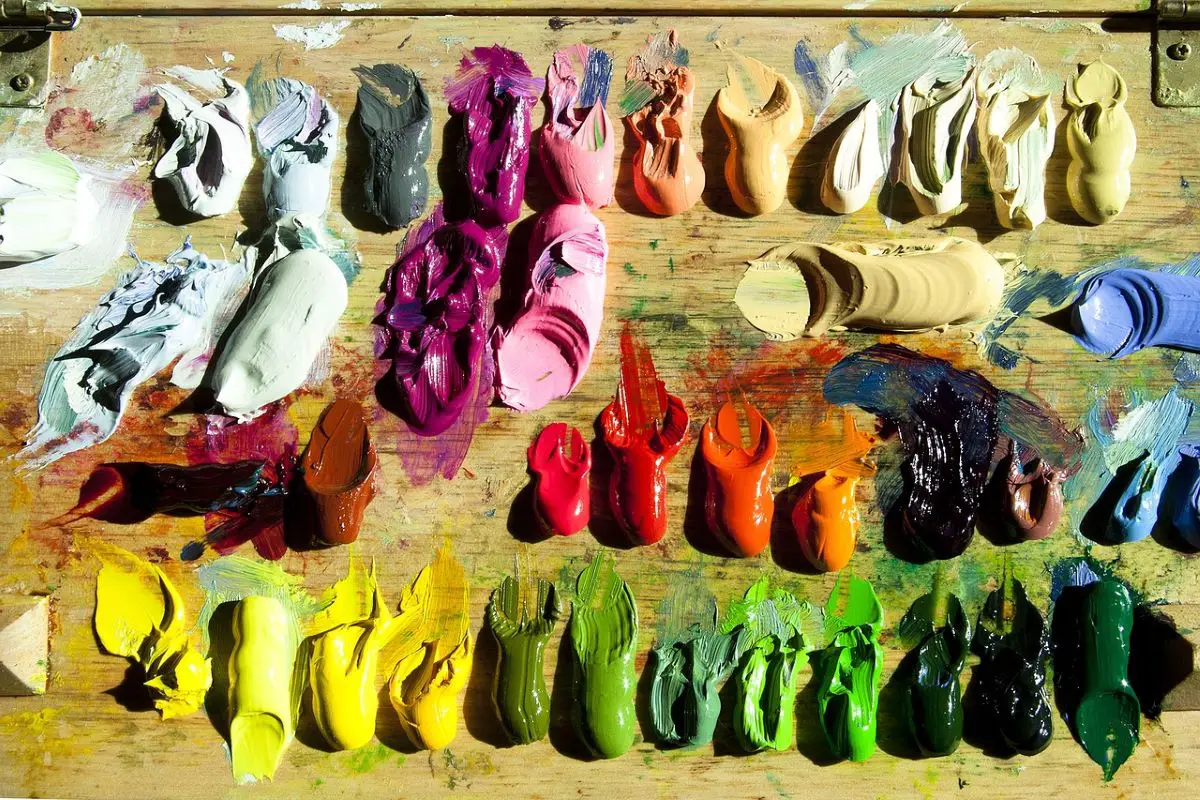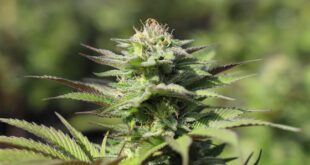Oil-based paints take a notoriously long time to dry compared to other types of paint, such as acrylic or watercolors. However, once it dries, oil-based paints can last a long time, even centuries. If you are painting with oil, you may want to know how long does oil paint take to dry, so you can adequately plan your painting.
Depending on the ingredient and quality, oil paint may take up to eight hours to set and 24 to be dry to the touch. Painting techniques may also influence drying times and the color used. You may speed up drying times by applying heat directly to the paint or drying them in a warmer location.
This article discusses oil paints and how long they take to dry. We also discuss why they take so long to dry and what you can do to dry the oil paint faster. We also will look into how you can check if your oil paint has dried up.
How Long Does Oil Paint Need To Dry?
How long oil paint needs to dry may depend on the ingredients, quality, painting technique, color, local temperature, etc. However, you may apply a basic assumption that it takes up to eight hours to set and 24 to be dry to the touch. Some may take days, months, or even years to properly dry up.
It may be hard to determine precisely how long it takes for oil paint to dry, as many factors seem to influence it. At its most basic, you can assume the oil paint will need at least eight hours to be set.
Then you may need to wait another 24 hours for the oil paint to be dry to the touch, meaning the surface feels dry and a dried hard layer has formed. However, do know that oil paint dries from the outside, meaning the outer layer dries first, before the inside.
This means even if the oil paint is dry to the touch outside, it may still be moist and wet, meaning you still want to be careful when manipulating the painting. Accidental brushing or harder touching may crack the outer layer, spread the oil paint, and perhaps ruin your painting.
There are also oil paints that may take up to days, months, or even years to dry up, which means you always need to be careful when working with new paintings.
You may like this article: Can You Spray Paint Glass?
What Determines How Long An Oil Paint Needs To Dry?
Factors such as ingredient, quality, painting technique, color, local temperature, painting surface, and age may determine drying times. Different oil paints may have other drying times, even from the same maker, which can sometimes frustrate many painters.
Oils
Different oil paint brands may be made using different oils, such as linseed, poppy, safflower, or walnut. Linseed oils are commonly used and dry fastest, while you may need up to four days for the rest.
Climate
Drying time is negatively impacted by humidity and chilly temperatures. An environment that is warm and dry is best for this process. If you paint Plein air (outdoor), your painting will dry up faster during summer under the sun than when it’s winter and snowing.
Age
A paint tube may have been in the store for an extended period before being sold, sometimes with a damaged seal. The oxidation process might have already begun, causing the paint to dry on the canvas more quickly than if a newer paint had been used.
Color
Some colors tend to dry faster, for example, earth-tone colors such as shades of brown, red, and oranges. They contain more iron oxide, which may help with drying. Some colors are known to take a long time to dry, for example, shades of black, yellow, or white.
Wind
This improves the drying environment as well. Common sense dictates that stronger wind may carry away moisture from the paint faster, helping it to dry.
Surface
An absorbent surface, as opposed to one that is not, helps the paint to dry faster. An example of an absorbent surface would be oil paper without a layer of primer.
Painting Technique
The quantity and thickness of the paint layers affect the drying time. Some painting techniques may require you to lay thick layers of paint, for example, Impasto or Fresco. Paintings with these techniques may take up to a week to dry.
Why Does Oil Paint Take So Long To Dry?
Oil paint takes longer to dry because it dries differently than other color paints. Acrylic or water-based color paints dry through evaporation. However, oil paints become dry as a result of oxidation. Oxidation takes much more time, slowing down the drying times for oil paints.
Acrylic or water-based color paints dry when the water in the paint mix evaporates, leaving only the color on the surface. Evaporation can be achieved quickly since it only removes moisture from the paint.
Oil paint, on the other hand, dries through an oxidation process in which the oil combines with oxygen in the air to cure and attain its final form. Oxidation is a much slower process, so oil paint can take a lot more time to dry.
You may see the drying process for oil paints as two distinct parts: setting and curing. Setting happens initially when the paint reacts with the atmosphere and dries up. Depending on the brand, oil, surface, etc., you may assume your paint becomes dry to the touch in 24-48 hours. However, be prepared for a longer drying time.
Once the outer surface sets, the oil continues to react with the oxygen in the atmosphere to fully set. You may overlook the oxidation process, as it can be slow.
As the paint cures, it may contract and move slightly. Curing may take days to years, depending on the oil, surface, temperature, painting technique, etc.
How Do You Make Oil Paint Dry Faster?
You may make your oil paint dry faster by painting in a bright, warm, well-ventilated environment. You may also consider using only linseed oil-based colors that dry faster, paint on oil absorbent surfaces, or pain in thinner layers.
Paint In A Bright, Ventilated Environment
This can be done in a shady area outside or inside with open windows. If it is humid, keep your windows closed and use a powerful fan and a dehumidifier if necessary. Good airflow promotes oxidation and speeds up the drying process of your paint. This process is also aided by natural light. During the summer, consider painting outdoors, and have the sun help your paint to dry.
Warm Up The Environment
Cold temperatures slow down the drying of oil paint. Heat, on the other hand, can significantly accelerate the drying process. You can rely on natural heat, such as the sun, or artificial heat, such as warming your painting room with a heater or blowing hot air to your painting. However, be cautious when applying heat as too much heat can cause cracking or yellowing of the paint.
Use Colors That Dry Faster
Earth-tone colors such as shades of brown, red, and oranges dry faster. Also, when painting, use faster drying colors for your first layer(s) of paint, as it helps subsequent layers to dry faster. Remember that layering a quick-drying color over a slow-drying color can result in cracking.
Only Use Linseed Oil Paint
Check with your art store what oil your paint uses. You may hear walnut oil, linseed oil, poppy oil, and safflower oil. Poppy oil dries the slowest, whereas Linseed oil dries the fastest. Stick with linseed oil-based oil paints to help dry it faster.
Use Absorbent Surface
An absorbent surface helps with drying immensely. Try to use a painting surface that has not been primed, such as unprimed oil paper or canvas. Unprimed painting surface tends to be more oil absorbent, which will help your paint dry up faster.
Paint In thinner layers
If you paint thick layers, the paint will simply take a longer time to dry. This is because a few layers of the paint are exposed to the environment, meaning it will oxidize slower. Applying your paint in thinner layers is another excellent approach to shortening drying periods.
Does Oil Paint Ever Truly Dry?
Oil paint does dry completely, although it may take a long time since painting often involves multiple layers and a thicker application of paint. The key is to ensure the paint is given space and time to dry, such as in dry, warm, ventilated places.
If you wonder if oil paint will ever dry, it will. Once applied on a surface, the oil paint will inevitably undergo an oxidation process, which means it will dry. The only thing is the time the paint needs to dry up.
It may take patience from you, as some paints are known to take up to a year to completely dry and cure. You may hasten the drying process by keeping the painting in a dry, warm, and ventilated place.
You may also want to consider how to protect the painting from the possible impact that may damage it. Commonly painters keep their paintings on some shelves, so they are away from the ground. Painting rack is also common.
How To Properly Check If Oil Paint Is Dry?
To properly check if your oil paint is dry, simply run your fingers or nails lightly over the paint surface without pushing into the paint. If you notice some fine dust powder, the oil paint has dried enough for you to apply another layer or put it aside for further drying.
After some time, you may want to check if your oil painting has dried up. This is because you may want to apply another layer of paint on top of it, or you simply want to ensure your hard work is set, and you can place it away to dry away slowly.
To properly check if your oil painting is dry:
- Allow up to 18 hours before even checking. The idea here is to consider that there may be multiple colors that may dry at different times. 18 hours should be suitable enough for most colors to at least set.
- Carefully slide your finger across a small area of your painting’s surface. You may also use your fingernails. Do not push your fingers into the painting. Just a light touch will do.
- If you see some fine dust powder, the oil paint is dried enough for you to add layers on top of it. Proceed with caution; if you are unsure, just keep the brush down and give it more time to dry.
- If your painting job is completed, you may then place the painting aside and allow it more time to cure and dry up completely.
 Being Human
Being Human




